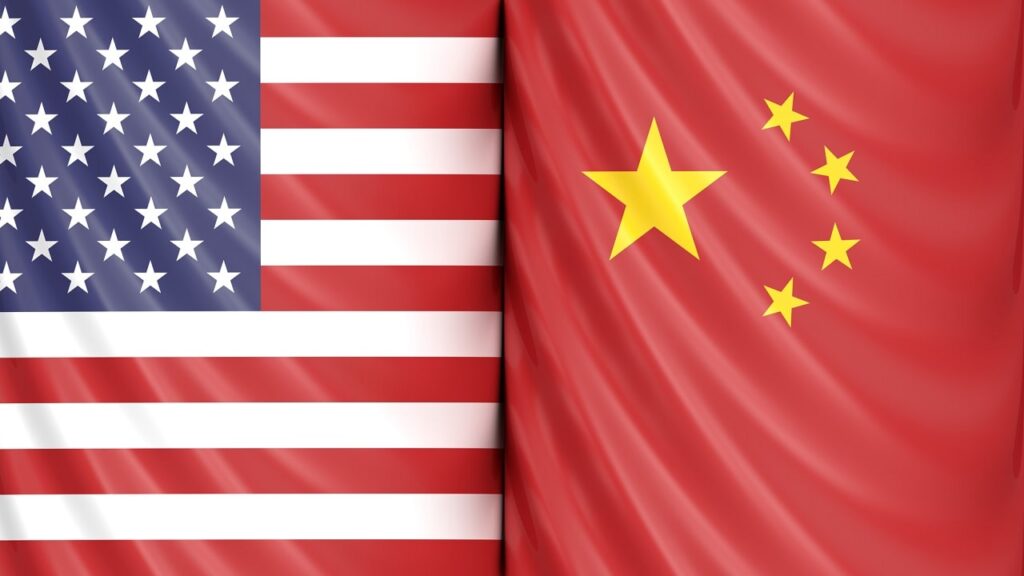I submarine internet cables, carrying the data of the world, are now the focus of technology war between USA and China. Washington, fearing Beijing’s spies, has stymied Chinese projects overseas and choked off Big Tech’s cable routes to Hong Kong, Reuters found. And they are just skirmishes in an increasingly complex conflict.
The submarine war between the US and China for the control of the internet cables
The Internet might appear as a vague concept, made up of computers that connect to each other without thinking too much about how this connection happens. But the truth is that the internet is one global network connecting billions of devices through undersea cables, satellites, antennas and servers. A massive infrastructure that has been continuously evolving for decades. But this infrastructure is increasingly vulnerable to attacks and interference from rival powers especially the United States and China.
An economic and geopolitical struggle
In February, the American submarine cable company SubCom LLC started laying a cable $600 million to transport data from Asia to Europe, via Africa and the Middle East, at super fast speeds on beyond 19,000 kilometers of fibre running along the seabed. The cable is known as South East Asia–Middle East–Western Europe 6, or SeaMeWe-6 for short. A structure that will connect a dozen countries as it winds from Singapore to Francecrossing three seas and the Indian Ocean along the way. It is expected to be finished in 2025.
It was a project that is escaped from China. A Chinese company that has quickly emerged as a force in the submarine cable construction industry – HMN Technologies Co Ltd – was close to winning the contract three years ago.

A contract blown from the United States
The customer for the cable was a cconsortium of over a dozen global companiesthe. Three of China’s state-owned telephone operators – China Telecommunications Corporation (China Telecom), China Mobile Limited and China United Network Communications Group Co Ltd (China Unicom) – had pledged funds as consortium members. Which also included the US Microsoft Corp and the French Orange SA, according to six people involved in the deal. HMN Tech, which was previously majority-owned by Chinese telecom giant Huawei Technologies Co Ltd, was selected in early 2020 to produce and lay the cable. It also seems thanks in part to heavy subsidies from Beijing which have lowered the cost. HMN Tech’s offer of $500 million was about a third cheaper than the initial proposal submitted to the cable consortium by SubCom based in New Jersey, according to Reuters.
The cable from Singapore to France would have been the largest project of its kind to date for HMN Tech. Consolidating it as the fastest growing manufacturer of submarine cables in the world.
But the US government, concerned about the potential Chinese espionage on these sensitive communications cablesran a successful campaign for pass the contract to SubCom through incentives and pressure on consortium members.
Global Clash
According to TeleGeography, a Washington-based telecommunications research firm, there there are more than 400 active submarine cables in the worldwhich they carry over 95% of all international internet traffic.
The history of submarine cables is not recent. The first cable for the tTelegraph transmission between the Old and New Worlds was laid in 1854 by a company called the Atlantic Telegraph Company, between the Canadian island of Newfoundland and Ireland. Since then, the expansion has been exponential, with current cables able to transmit up to 100 terabits per second, equivalent to around 25 million simultaneous phone calls.

These cables transmit everything, from emails and banking transactions to military secrets and diplomatic communications. The economic value of submarine cables is estimated to be about 10 trillion dollars a year. Security outages or attacks on this infrastructure are global in scope.
A recent example of a submarine cable outage occurred on June 7, 2022. Two communications cables linking Taiwan with its Matsu Islands, close to the Chinese coast, have been cut. THE 14,000 residents of the islands have been disconnected from the internet. Land Taiwanese authorities suspected a Chinese fishing vessel and Chinese freighter of causing the disruption. But they did not provide direct evidence.
US and China clash over submarine internet cables: espionage
Another concern is theinterception of communications. Spy agencies can easily get access to cables arriving on their territory. Justin Shermana member of the Atlantic Council’s Cyber Statecraft initiative told Reuters that the undersea cables were “a surveillance bonanza” for the world’s intelligence agencies.
“When we talk about US-China technology competition, when we talk about espionage and data capture, submarine cables are involved in every aspect of these escalating geopolitical tensions,” Sherman said.
Two of the projects blocked by the US government involved cables that had already been manufactured and laid thousands of miles across the Pacific Ocean. Big US tech companies like Google LLC, Meta Platforms Inc e Amazon.com Inc they were major investors in at least one, or in Meta’s case both. Delays and cable rerouting have cost each of these companies tens of millions of dollars in lost revenue and additional costs. At least according to what four sources who worked on the projects said. Amazon, Meta and Google declined to comment on these projects.
The United States wants to remain a technology leader
SubCom’s attempt to exclude the Chinese manufacturer from the cable project linking Singapore to France it is part of a broader strategy of the US authorities. The goal is to counter China’s rise as a world leader in cutting-edge technologies. Across the board: whether it’s submarines, microchips, artificial intelligence or drones.

China is strengthening its pmilitary potential with sophisticated weapons. And Beijing is becoming increasingly determined to challenge US influence around the world through trade deals. But also weapons and infrastructure they are carrying large areas of the planet in its sphere of influence.
US cable operation was based on a three-year interagency task force known informally as Team Telecomaccording to Reuters reports.
The US-China fight over undersea internet cables is based on economic incentives – for now
To convince the investors of the project to choose SubCom as supplier instead of the Chinese builder, the United States has offered incentives to the telecommunications companies of the countries along the cable route. But it seems that the underlying threats played an equally important role.
The US Trade and Development Agency (USTDA) told Reuters it had offered btraining grants with a total value of $3.8 million to five telecommunications companies in exchange for selecting SubCom as the supplier.
Meanwhile, US diplomats have warned participating foreign telecommunications carriers that Washington intended to impose crippling sanctions on HMN Tech. A development that could jeopardize their investment in the cable project. A senior US State Department official confirmed that the department had advocated through its embassies to help SubCom win the contract. Also warning other countries about the security risks posed by HMN Tech.
The cable will not land in Chinese territory. But the US government believed that HMN Tech could enter equipment from remote surveillance within the cable. However, he has brought no evidence of this.
A continuous technological conflict
Reuters details at length the conflict between the two superpowers regarding submarine cables, in this report that we invite you to read more. But it’s not the only tech confrontation between the two nations.
The situation between the US and China is very tense and has worsened recently for various reasons. China supported Russia in attacking Ukraine, while not approving of the invasion. In addition, China has continued to crack down on protests in Hong Kong and to threaten Taiwan. In February, the US shot down an alleged Chinese spy balloon which was in American airspace. China claimed that he was a weather balloon misled and criticized Americans for their disproportionate reaction. The Commerce Department in December listed dozens of Chinese firms producing technology such as drones and artificial intelligence chips in its so-called Entity Listwhich severely limits their access to American technology.
To these criticisms are added those regarding the possible espionage by Beijing through TikTok. Again, there is no definitive proof. But it seems that Congress is increasingly determined towards a ban. With acclaim from both Democrats and Republicans.
On the other hand, the United States is investing in the production of technologies in America. In the span of a year, the Biden administration has proposed a key law to provide $52.7 billion in aid for manufacturing and…















Leave a Reply
View Comments